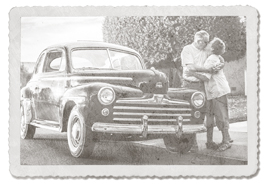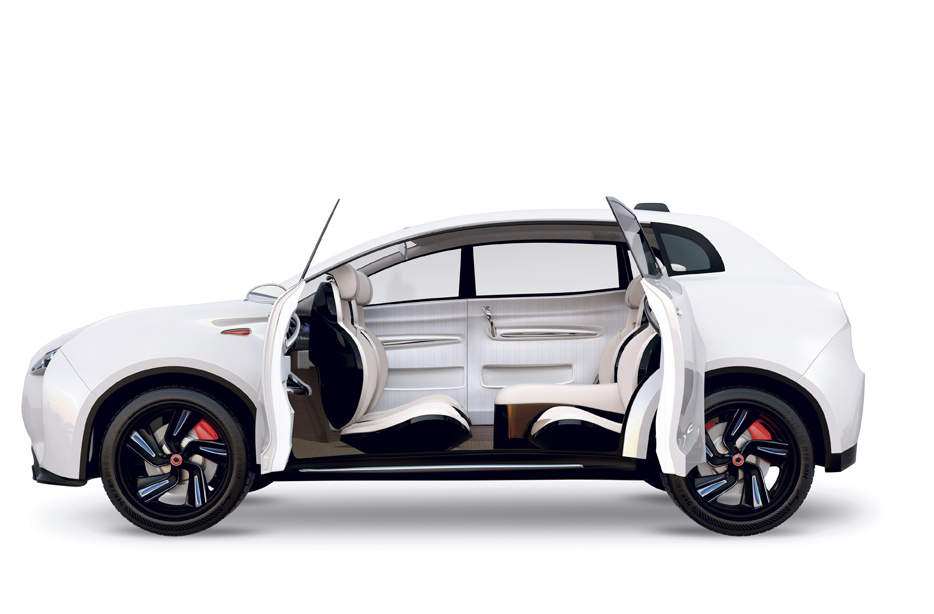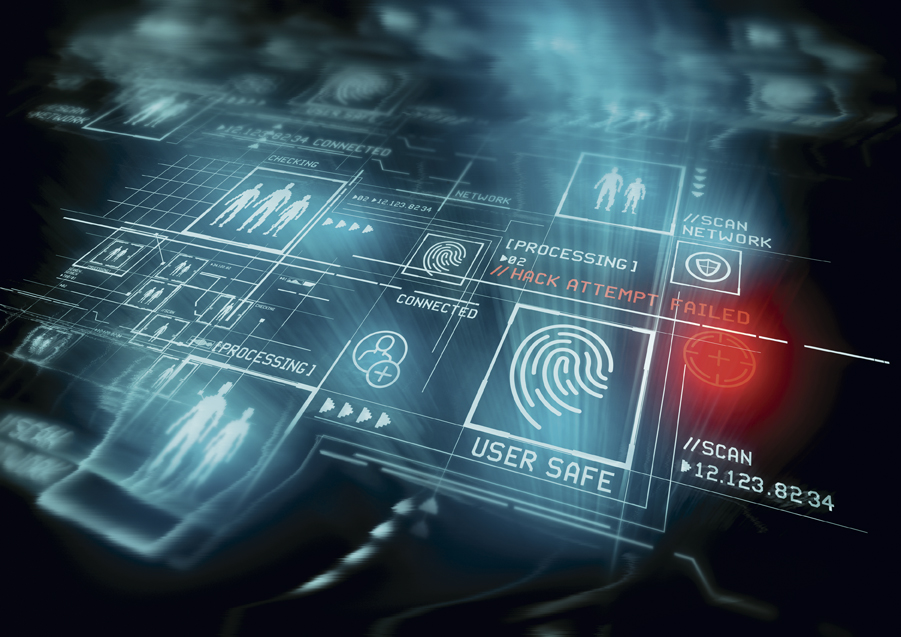Agents must understand the programs available to their customers through the companies they represent
Over the past decade or so, several so-called disruptive forces have affected the personal auto insurance market. Among them: telematics and usage-based insurance products, which ushered in new ways for insurers to collect, develop, and use large volumes of refined, driver-focused data to assess and price risk more accurately.
On the heels of this wave came the rise of the sharing economy, which heralded a shift in consumer behavior and the creation of entirely new exposures, with individuals serving as taxi drivers or car rental agencies.
“More consumers are taking part in these on-demand and peer-to-peer programs, and that means that many personal vehicles that once spent most of their functional life sitting idle in a garage or driveway or parking lot now are being used to generate income.”
—Casey Brewer
Senior Product Development Specialist
AAIS
Now, with the rapid development of autonomous vehicle technology that promises to reduce or even eliminate driver behavior from the personal risk equation, the market faces what is perhaps the greatest disruption yet. This shifting landscape continues to create myriad challenges and opportunities for carriers to address.
Agents and brokers are on the front line and are being called on to help clients and prospects navigate the changing environment. “Agents need to understand the programs that are available to their clients through the companies they represent,” says Casey Brewer, senior product development specialist at AAIS. AAIS is a national nonprofit property/casualty rate and form advisory organization that is wholly owned and operated by its member companies.
“This includes the breadth of coverage options and rating—for instance, coverage for transportation network company use and/or usage-based insurance rating—so they can educate clients, help them identify their exposures, and make sure they’re offered appropriate coverage,” he adds. AAIS offers standardized policies, forms, and rating information for 34 lines of business, as well as industry research and data development.
Telematics
The use of telematics and usage-based insurance is relatively widespread and is more mature than the other two factors. “Most carriers that have implemented usage-based insurance programs have seen improvements in risk pricing and claims processing,” notes Brewer, who is the principal developer of new AAIS auto forms introduced last year. “By and large, they’ve been able to boost customer satisfaction and retention, and they’ve been able to reduce costs.”
Clients also are benefiting. “They are able to take advantage of certain premium discounts,” Brewer points out, “and in many instances, they have been able to use direct feedback on their—and their family members’—driving habits to help improve behavior behind the wheel.”
Telematics programs provide insurers access to vast amounts of data. Although data elements collected vary, information on driver behavior remains at the core. “We’re not just looking at things like the number of miles driven,” Brewer notes. “Information about where, when, and how those miles were driven allows for a more comprehensive evaluation of risk.”
Since the inception of telematics,implementation costs, regulatory issues, and concerns over consumer privacy have been, to varying degrees, barriers to adoption. Still, telematics technology is rapidly becoming more common. More cars are coming off assembly lines with built-in telematics technology, and more insurers support telematics data collection and usage. Smartphone apps and after-market on-board diagnostic devices also provide ways to track driving patterns among older cars.
Although the methods of collecting and applying telematics data have become more sophisticated, and adoption rates are rising, the impact on consumers largely has been limited to pricing and customer experience. “The actual insurance product, including coverage breadth and depth, has seen little if any modification,” Brewer explains. “Better understanding of the risks individual drivers represent has not materially altered the nature or scope of exposures traditionally associated with operating a motor vehicle.”
Sharing economy
Unlike the rise of telematics, which fueled greater understanding of driving behavior, the sharing economy has resulted in significant behavior changes. “The introduction of transportation networks and personal vehicle sharing programs has put activities once limited to businesses and commercial auto insurance suddenly and irreversibly in the realm of private vehicles and personal auto insurance,” Brewer observes.
“More consumers are taking part in these on-demand and peer-to-peer programs, and that means that many personal vehicles that once spent most of their functional life sitting idle in a garage or driveway or parking lot now are being used to generate income,” he adds. “This sharing economy has blurred the lines between personal and commercial activity, creating both challenges and opportunities for insurers.”
 Brewer acknowledges that risks associated with giving someone a ride or lending a car to a friend have existed perhaps since the automobile was invented. “But historically,” he notes, “private passenger auto insurers focused on covering individual drivers and vehicles only within the scope of personal use.”
Brewer acknowledges that risks associated with giving someone a ride or lending a car to a friend have existed perhaps since the automobile was invented. “But historically,” he notes, “private passenger auto insurers focused on covering individual drivers and vehicles only within the scope of personal use.”
He points to the need for personal auto insurers to take an active role in this rapidly growing segment of the economy. “Through June of this year, 48 states and the District of Columbia have enacted legislation aimed at addressing insurance for transportation network companies,” Brewer says.
“Some carriers have taken a conservative approach and don’t offer coverage for transportation network drivers,” he explains. “But competition isn’t lacking among those that have elected to cover these risks.” Several companies have introduced endorsements to modify or eliminate traditional coverage exclusions, he adds, and other amendments clarify when coverage applies and how it interacts with other applicable policies.
Brewer says traditional rating programs and more sophisticated rating structures are grappling with new data elements and rating variables to account for changes in driving behavior and exposures from potentially unknown vehicle operators. “Linking telematics data to drivers who may or may not be operating the insured vehicle at any given point in time complicates the job of underwriting these emerging risks,” he remarks.
Autonomous vehicles
Into the rapidly evolving personal auto insurance market comes a whole new technological revolution. Autonomous vehicles bring the promise of driving themselves with little or no human interaction. “They once were the realm of science fiction, but widespread use of driverless cars is now closer than ever to becoming reality,” Brewer notes.
Auto manufacturers are introducing more vehicles with advanced driver assistance features, from automatic braking and adaptive cruise control to lane maintenance assistance and self-parking capability. “A lot of time and money have been spent to develop sophisticated, intelligent systems that can deliver mass-produced autonomous vehicles to market in the next five years,” Brewer says.
Experts say the technology ultimately could eliminate all human error, a factor in more than 90% of all automobile accidents. The reduction in accidents could save more than 40,000 lives each year.
According to Brewer, continued development and adoption of these technologies are not without challenges. “For example, the regulatory framework has yet to be fully defined,” he notes. “Congress is considering a wide-ranging set of bills aimed at regulating the growing industry, but there are no federal standards beyond voluntary safety rules published during the Obama administration.” In this vacuum, roughly two-thirds of states have imposed some form of regulation on self-driving cars within their borders, according to the National Conference of State Legislatures.
Other significant obstacles must be addressed. “There seems to be a lack of consumer confidence in the safety and reliability of autonomous vehicle systems,” Brewer observes. “Plus, there’s a segment of the population that simply enjoys driving, and those folks have little or no interest in turning over the wheel to a computer.”
Even so, many experts believe that, if trends continue, autonomous vehicle technology could significantly shrink the personal auto insurance sector over time. “Exact figures are impossible to determine,” Brewer acknowledges, “but some studies estimate the market could contract by 70-plus percent, or$137 billion, by 2050.”
He points out that other recent studies support the notion that U.S. property/casualty insurers could see significant short-term financial gains from insuring autonomous vehicles. “The cost of insuring vehicles equipped with increasingly sophisticated and expensive cameras, sensors, and hardware could bring more than $80 billion in new premium to the auto insurance industry during the next decade,” he says.
Keeping the human element in check doesn’t guarantee that accidents won’t happen. “Hardware failures and software algorithms that don’t react to particular scenarios, or even random chance, virtually guarantee that some element of risk will always be involved with the use of a motor vehicle,” Brewer explains. “First-party and no-fault coverages will still be viable products, and losses from theft, vandalism, and natural occurrences will continue to lead vehicle owners to protect their investment.”
Brewer says the burden of liability, however, certainly will move from the individual consumer to a manufacturer’s product liability, as operations of vehicles are controlled by hardware and software systems. “Cyber exposures also will continue to grow as vehicle-to-vehicle and vehicle-to-infrastructure communications and control systems are deployed to support driverless cars,” he adds.
Looking ahead
To stay relevant and competitive, Brewer advises agents to partner with companies that provide a wide range of coverage and pricing options to meet clients’ needs. “That’s everyone from low-mileage drivers to part-time and even full-time transportation network company drivers,” he notes.
He also stresses the importance of independent agents and their associations working with the companies they represent to identify approaches to market opportunities. “In addition,” he notes, “agents who focus on personal auto insurance may want to pursue diversification into other lines over time, as autonomous vehicles shift an increasing percentage of the risk and insurance needs into commercial lines.”
Brewer says AAIS, along with its industry partners, remains committed to supporting the auto insurance industry in its efforts to adapt to change and succeed in the continuously evolving market. “Carriers that can adapt to changing driver behavior, new trends in vehicle ownership and use, and emerging technologies and data gathering are poised to succeed in the auto insurance market of the future,” he asserts. “Agents with good carrier relationships should enjoy similar success.”
By Dave Willis, CPIA






